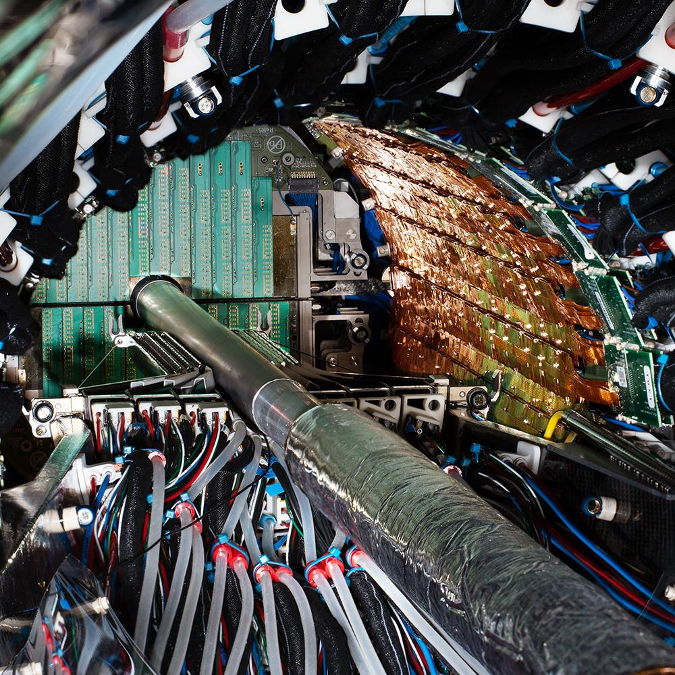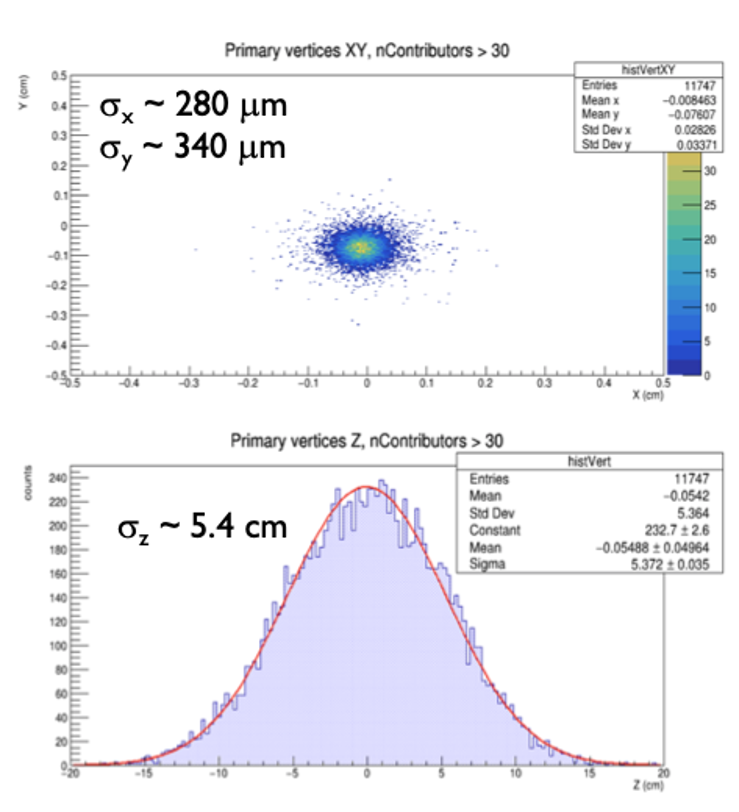The Large Hadron Collider is emerging from Long Shutdown #2. This three-year break in the operations schedule was spent on intensive work to improve the accelerator performance (e.g. new and more powerful intensity setup, in particular) and upgrades to the detectors. LBNL scientists from the Nuclear Science and Physics divisions worked on two of these detectors – ALICE and ATLAS. The last weekend of October (2021) provided an excellent opportunity to verify the readiness of the instrumentation. Low intensity probe-beams of protons (about 3.5 x 1011 particles per beam) were injected into the LHC from the Super Proton Synchrotron and accelerated to a kinetic energy of 450 GeV. The circulating beams in the LHC were brought to collisions at the main interaction points for a total of about 40 hours over 5 days. During this time all four major experiments ALICE, ATLAS, CMS, and LHCb recorded millions of collisions; testing the old and new detector elements as well as the computer systems and new software.


During the long shutdown, the ALICE detector underwent a major facelift – to the point that improvements were made in all subsystems. In particular, the heart of the particle tracking system was redesigned and rebuilt. The new Inner Tracking System (ITS) was installed in May 2021 and was, in part, built at LBNL by Nuclear Science Division scientists and supported by funding from the DOE Office of Nuclear Physics. The ITS is an ultralight detector using Monolithic Active Pixel Sensor (MAPS) technology and is currently the largest device of its type. [MAPS were also used to upgrade the forward tracking – MFT detector in ALICE.] Figure 1 shows the ALICE ITS during installation – with the staves of the LBNL-built middle layers of the detector already installed. Figure 2 shows the reconstruction of p-p collision vertices as seen by the ITS . The detector technologies developed and employed for the ITS are also being considered for several applications in other experiments at accelerator facilities, including the vertex detector of the sPHENIX experiment at RHIC where NSD scientists are also involved.
Other major ALICE improvements include the redesign of the Time Projection Chamber readout planes (also supported, in part, by the DOE), the trigger detectors, and a complete revamping of the computing infrastructure with a 2000-GPU farm for online calibration and data processing.
These upgrades will allow ALICE to improve the precision of the measurements characterizing the quark-gluon plasma created in heavy-ion collisions. For many critical physics studies, the statistics collected over the next decade will be enhanced by 100-fold.
The beam tests in October show that the new ALICE systems will be ready for data taking of proton-proton and heavy-ion collisions in Spring 2022. After an extended period of recommissioning of the LHC itself, the first collisions for physics are expected in the second half of the year.
[1] CERN Courier –
https://cerncourier.com/a/alice-tracks-new-territory/